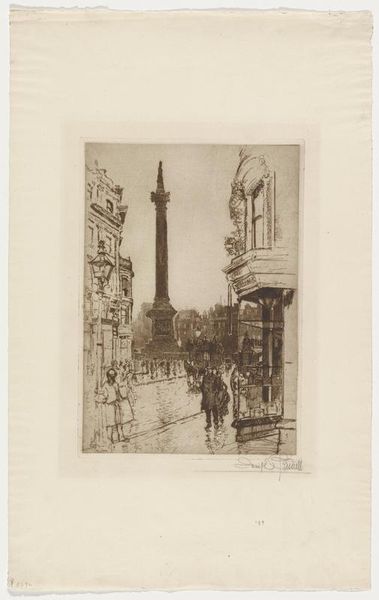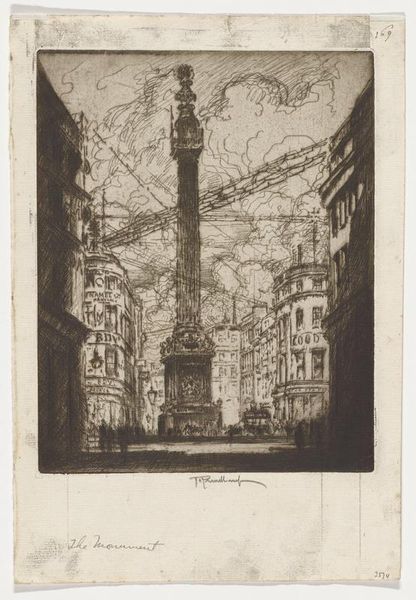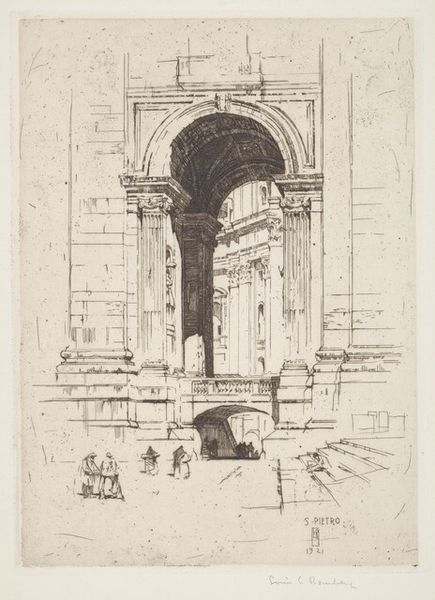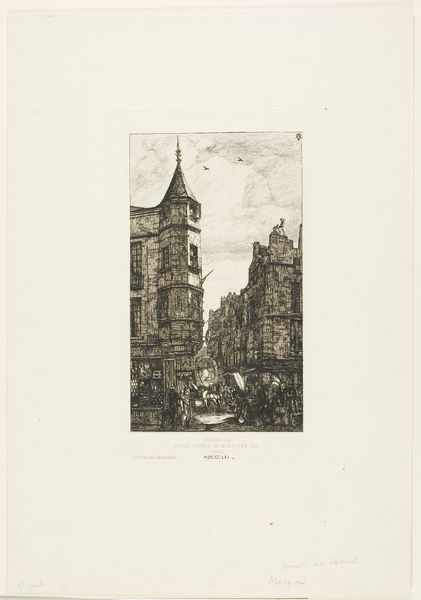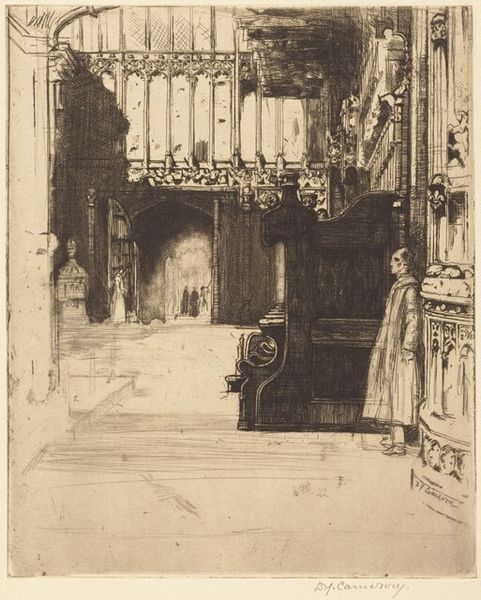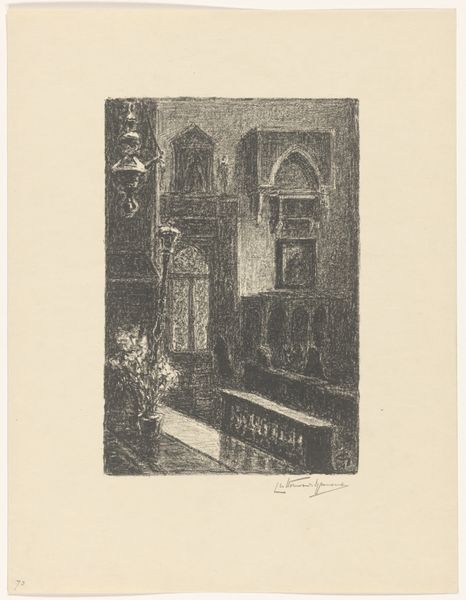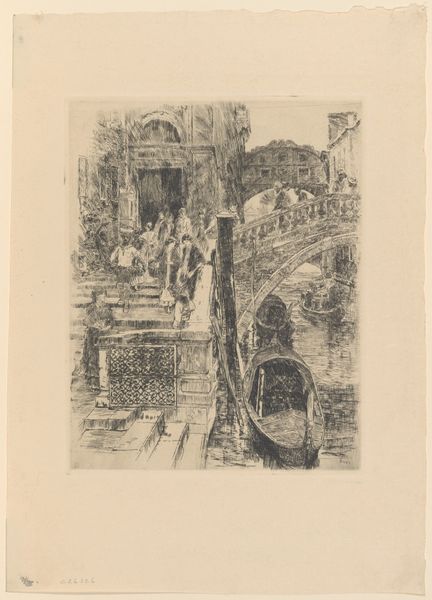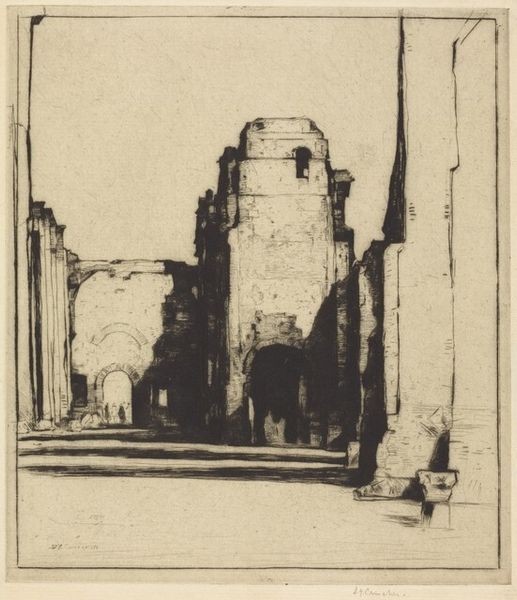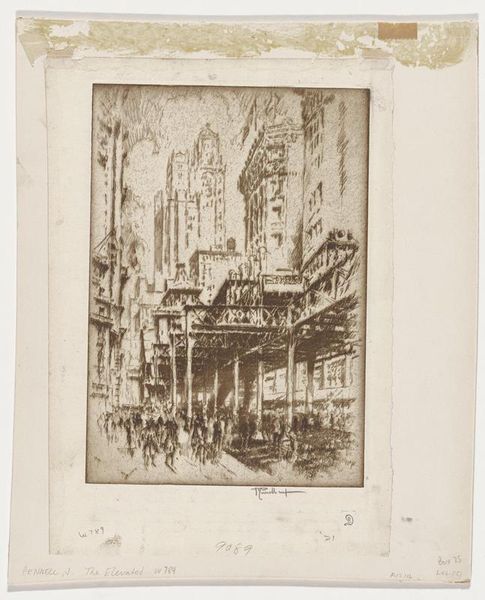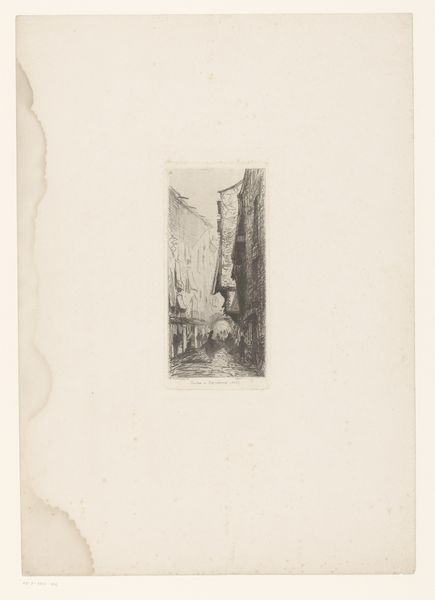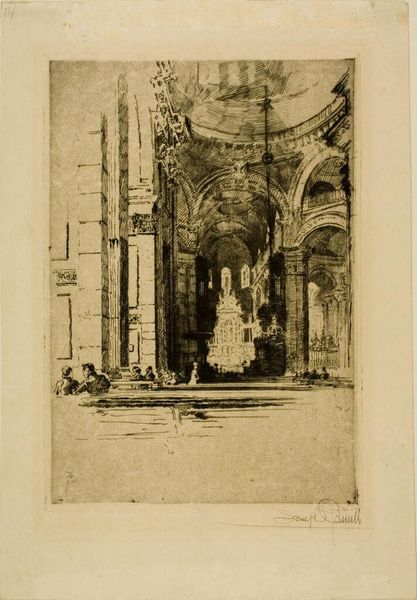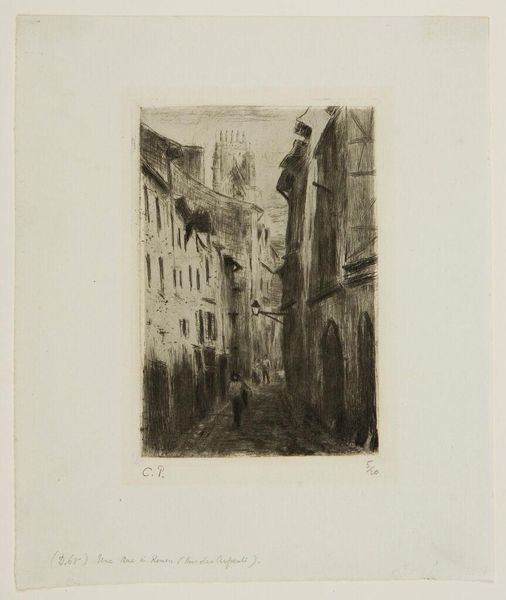
#
pencil drawn
#
photo of handprinted image
#
light pencil work
#
ink paper printed
# print
#
pencil sketch
#
charcoal drawing
#
pencil drawing
#
united-states
#
pencil work
#
tonal art
#
watercolor
Dimensions: 9 5/8 x 6 5/8 in. (24.45 x 16.83 cm) (plate)15 5/8 x 11 1/8 in. (39.69 x 28.26 cm) (sheet)
Copyright: No Copyright - United States
Curator: This is Joseph Pennell’s "Choir of St. Paul's," created in 1885. It's a print. The work beautifully captures the interior of St. Paul's Cathedral. Editor: My first thought? It's remarkably light, almost airy, despite depicting such a grand, stone space. The delicate lines create a feeling of vastness and light. Curator: Absolutely. The rendering of depth here is key. Note the strong architectural lines defining the space, but how the tonal variations cause the background recede from our eye. Pennell manipulates perspective effectively, creating an intricate play between light and shadow. Editor: The choir itself appears as a beacon, doesn’t it? In this relatively dark space, the eye is immediately drawn to that bright point. I wonder what function this sacred location represents in the city’s collective memory? What meanings might be tied to performances within this structure, in this time? Curator: Certainly, one can consider the iconography associated with St. Paul’s—a symbol of resilience and British identity. But Pennell directs our attention, primarily, to the way the architectural components converge. Consider the arches. Observe how they cascade back into space. His method here evokes grandeur without excess detail. Editor: For sure. But I find it impossible not to interpret the choice of subject here, an icon, really. And I am really quite taken by how the artist has subtly inscribed small gatherings along the foreground and middle-ground planes of the church: worshippers, no doubt. Curator: And it's precisely this interaction between architectural structure and human form that lends it so much formal interest. I find the figures so much smaller relative to the building, and rendered quickly, that the viewer's eye bounces around without getting fixed on the meaning or message inherent in these people or any larger narrative purpose. The building becomes the subject. Editor: Perhaps so. But the way Pennell depicts this historical interior and hints at these historical lives continues to ignite a curiosity within me. Curator: It's through considering his approach to light, space, and composition that the symbolic qualities become clear, though, even beyond Pennell's intention. Editor: A valuable observation. This layered discussion reminds us how a single artwork offers endlessly variable encounters.
Comments
No comments
Be the first to comment and join the conversation on the ultimate creative platform.

